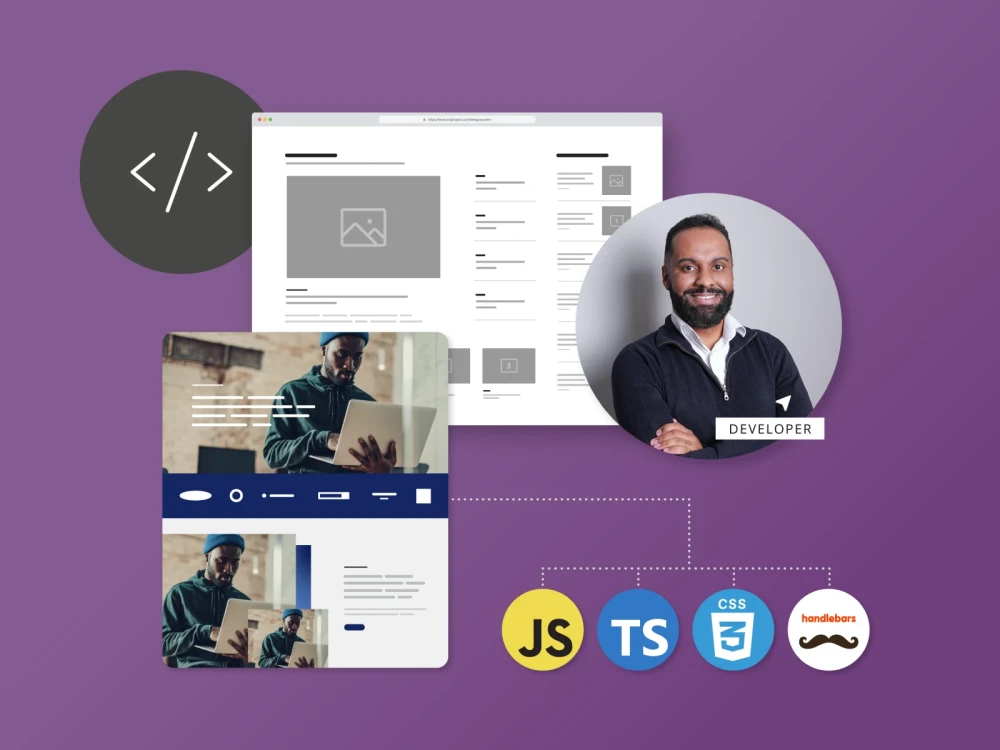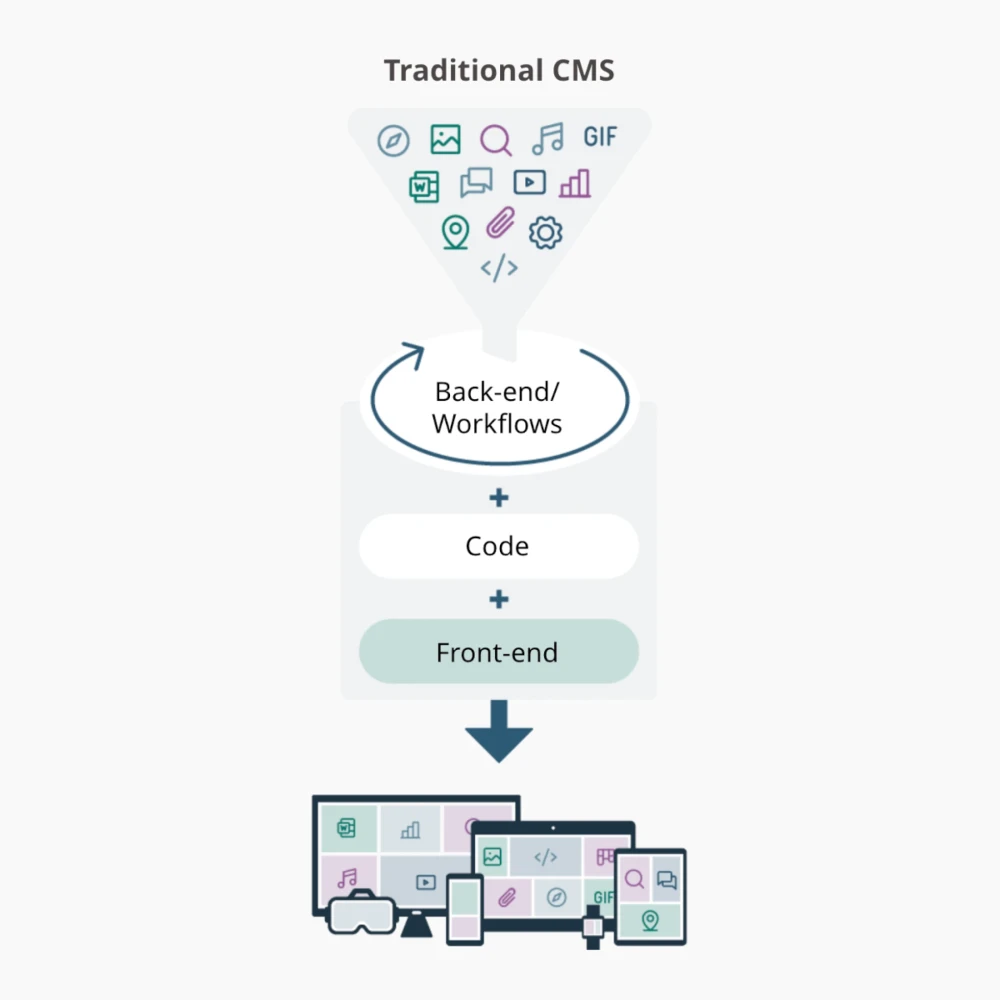Traditional/coupled CMS
A traditional CMS manages your entire content library and web application end to end, and usually dictates the technology used throughout — from the creation and storage of content, to the presentation of that content on your web properties.
While this type of CMS offers a full-stack solution from content management to output, it offers little technical flexibility. As the data and presentation layers are tightly bound, there’s often less freedom to distribute content elsewhere. If you’re considering a traditional CMS, it’s important to note that any future migrations to a new system would require a complete site rebuild.
A traditional content management system (CMS) manages the entire content library and web application, from content creation and storage to content presentation on web properties. Traditional CMSs are also referred to as “coupled” content management systems.
The role of a CMS is to create and publish content and to house design assets, including visual layout and code. Using a traditional or coupled CMS confines content to the location locked into its coding (e.g., WordPress for blogs, or Drupal for a corporate website), which may suit users with low content publication needs.
Traditional or coupled CMSs offer a full-stack solution from content creation and management to output, but provide little technical flexibility since the data and presentation layers are tightly bound. Traditional CMS users must ask IT to optimize content distribution for any new channels. If you use a traditional CMS architecture, future migrations to a new system will require a complete site rebuild.
Some organizations prefer traditional CMS systems that require users to manage and update their sites according to tightly defined internal technology rules.
Traditional CMS architecture typically involves a server-side approach where the CMS software is installed on a web server. Here are some examples of traditional CMS architectures:
- WordPress: WordPress is a popular CMS platform, known for its flexibility and ease of use. It follows a traditional architecture where the WordPress software is installed on a web server, typically running PHP and MySQL. It employs a template-based system, allowing users to create and manage content through a web-based interface.
- Joomla: Joomla is another widely used CMS that follows a traditional architecture. It is built on PHP and uses a MySQL database. Joomla provides various features for content management, user management, and extensibility through extensions and templates.
- Magento: Magento is an e-commerce-focused CMS that employs a traditional architecture. It is built on PHP and relies on a database (usually MySQL). Magento provides extensive features for managing product catalogs, processing orders and handling online transactions.
These examples represent a subset of traditional CMS architectures, and each CMS has its own unique features, strengths and communities. However, the fundamental idea behind a traditional CMS architecture remains consistent: the CMS software is installed on a server, content is stored in a database and users interact with the CMS through a web-based interface.
Developers looking for documentation about Brightspot’s approach to CMS architecture should visit our documentation library here.



